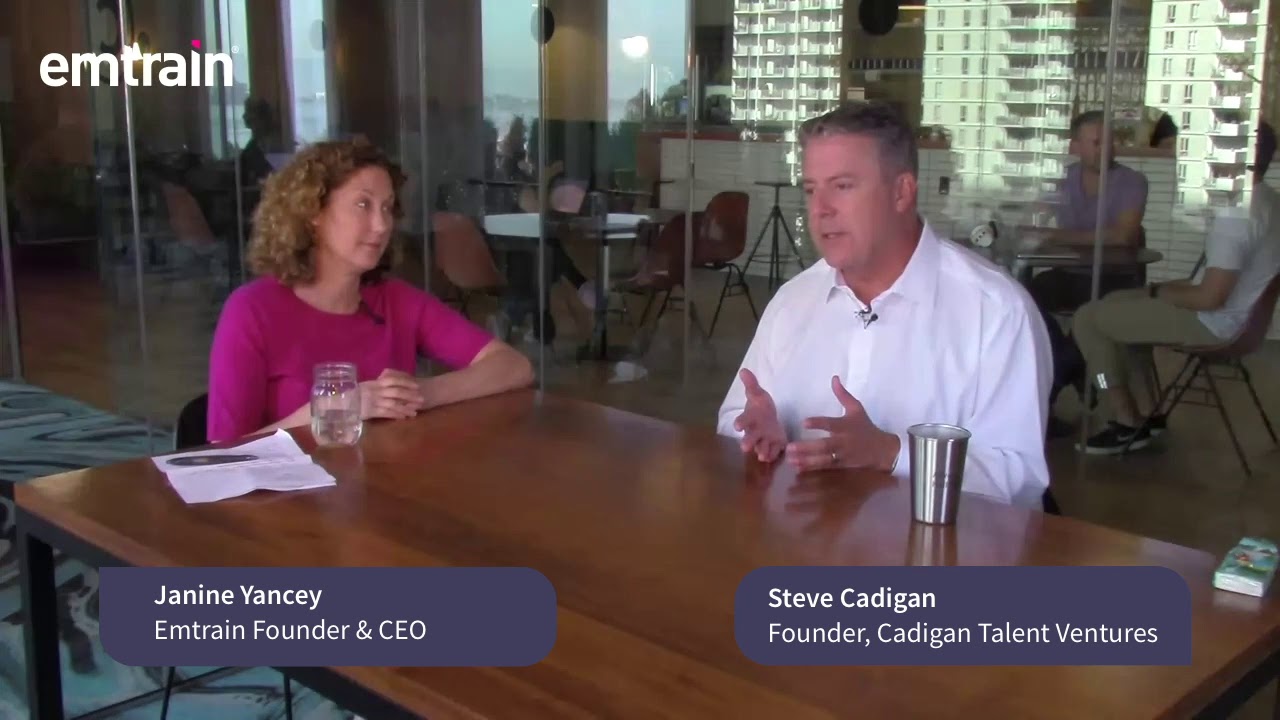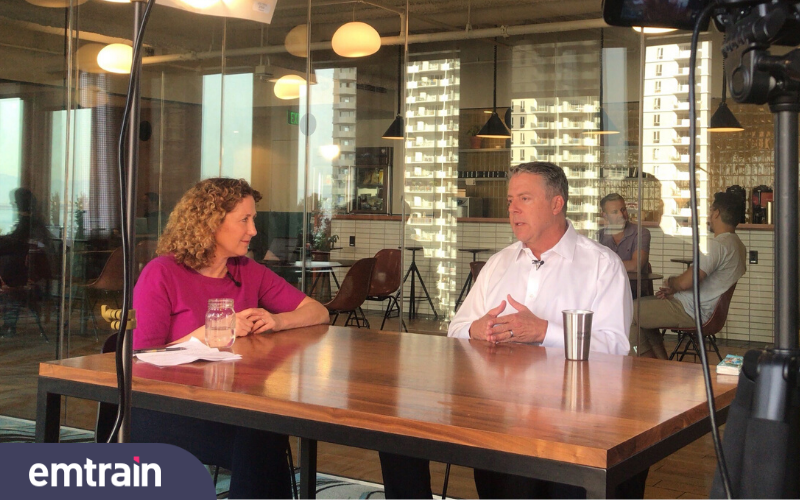On Tuesday, November 12th Emtrain’s Founder and CEO Janine Yancey sat down with Steve Cadigan, Founder of Cadigan Talent Ventures and former VP of Talent at LinkedIn. Steve was able to leverage his years of experience working in Human Resources all over the world to provide some insight into how HR can help guide company culture, drive employee engagement, and expand its reach to every level of your organization.

So many companies are looking for new solutions to drive employee engagement, but is this just another passing fad in the HR sphere, or can engagement really drive business and benefit your bottom line? Janine asked Steve as much during their talk:
Janine: Why is there this myriad of employee engagement platforms out today? What’s going on with the workforce that everyone is feeling the need to have an employee engagement platform?
Steve: If we look at the number of new start-ups listening to employee surveys and trying to understand what’s going on, you’ll see an explosion of new companies offering new solutions in that space. The one global organization that measures engagement, Gallup, recently published some statistics for the United States. Apparently, 70% of the workforce is disengaged, meaning only 30% are engaged. And of that 70%, 15% of employees are actively disengaged, and that number is growing. This is a big problem.
Janine: So what do you see at the driver for these numbers?
Steve: There’s never one cause for this, but I think that the future of work today is so uncertain. Companies can’t predict what skills they need 5 to 10 years from now with absolute certainty. If companies can’t know what skills they need, individuals can’t know what skills they need to develop. Additionally, the average length of time that people are staying in a job, in the 25 to 35-year-old range is 2.8 years, and I would argue in Silicon Valley that it’s less than that.
Janine and Steve went on to point out the state of the marketplace and how it relates to both a current upheaval of social norms and shifting benchmarks and a rapid economic change that has to do with automation. The last time that we have seen this extreme change in the workforce was the industrial revolution, the Gilded Age. Additionally, we have a growing number of independent workers, and large companies are using an increasing amount of short term, independent workers. Companies complain about low employee retention rates, but are reluctant to offer their employees 5-year growth plans. That being said, how can we establish trust?
Upon wrap-up, one viewer posted the question: “Does trust look different [from] different generations?”
Steve: I absolutely think so, but let’s unpack the question behind the question. That is: Do I trust leaders, management, and the corporation? In the past, the answer would always have been yes. Now, establishing that sort of trust requires much more transparency than they did in the past. Transparency means communicating the thought process behind any organizational or business decisions made behind closed doors.
This is only a small taste of some of the insights Janine and Steve provided during their talk. To get the full scoop about employee engagement, organizational trust, and the future of work listen to the full talk on YouTube. And don’t forget to follow Emtrain on LinkedIn so you are notified whenever we go live with Always Learning.
Always Learning is a bi-weekly live broadcast. We take you beyond compliance by dissecting the tricky culture issues and discussing the state of today’s marketplace, giving you a birds-eye view of workplace culture with candid conversations with subject matter experts and thought leaders in their fields. Check out previous broadcasts here.










